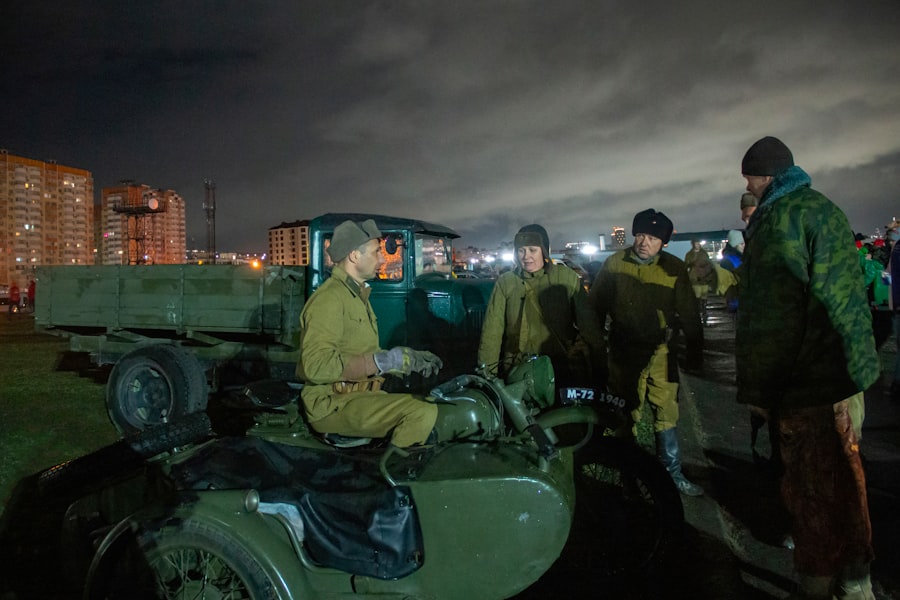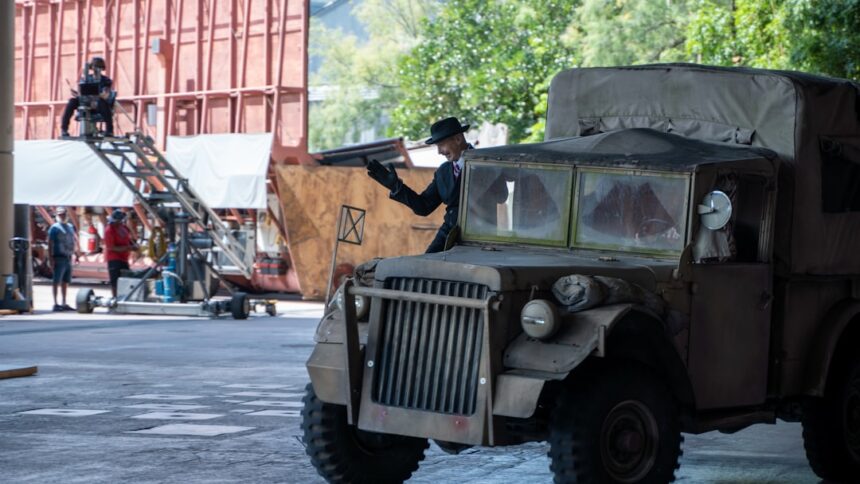The Russian Army has faced significant challenges in recent years, particularly concerning its equipment shortages. These deficiencies have raised concerns about the military’s operational readiness and overall effectiveness. As the geopolitical landscape evolves, the need for a well-equipped and modernized military becomes increasingly critical.
The shortages in the Russian Army’s arsenal not only hinder its ability to respond to potential threats but also reflect deeper systemic issues within the defense sector. Understanding the root causes of these shortages is essential for assessing the future capabilities of the Russian military. The implications of equipment shortages extend beyond mere numbers; they affect morale, strategic planning, and the overall perception of military strength.
As Russia navigates complex international relations and regional conflicts, the ability to project power and maintain a credible defense posture is paramount. The current state of the Russian Army’s equipment inventory raises questions about its readiness to engage in modern warfare, which increasingly relies on advanced technology and rapid response capabilities. This article delves into the multifaceted causes of these shortages and explores potential solutions to bolster the Russian military’s effectiveness.
Key Takeaways
- The Russian Army is facing significant equipment shortages, impacting its military readiness.
- Lack of funding and budget constraints are major causes of equipment shortages in the Russian Army.
- Outdated and inefficient procurement processes contribute to the equipment shortages in the Russian Army.
- Dependence on imports and international sanctions further exacerbate equipment shortages in the Russian Army.
- Solutions to address equipment shortages include increased funding, modernization of procurement processes, development of domestic defense industry, and collaboration with international partners.
Causes of Equipment Shortages in the Russian Army
Several interrelated factors contribute to the equipment shortages plaguing the Russian Army. One of the primary causes is the legacy of underinvestment in defense infrastructure and modernization efforts over the past few decades. Following the dissolution of the Soviet Union, Russia’s military budget faced significant cuts, leading to a decline in production capabilities and maintenance of existing equipment.
This historical context has created a situation where many systems are outdated, and new acquisitions have not kept pace with evolving military needs. Additionally, bureaucratic inefficiencies within the defense procurement system exacerbate these shortages. The procurement process is often mired in red tape, leading to delays in acquiring necessary equipment and technology.
This sluggishness not only affects the timely delivery of new systems but also hampers the maintenance and upgrade of existing assets.
Lack of Funding and Budget Constraints

A significant factor contributing to the equipment shortages in the Russian Army is a lack of adequate funding and budget constraints. While Russia has made strides in increasing its defense budget in recent years, it still faces challenges in allocating sufficient resources to address its military needs comprehensively. Competing priorities within the national budget often lead to insufficient investment in critical areas such as research and development, procurement, and maintenance of military equipment.
Moreover, economic fluctuations and international sanctions have further strained Russia’s financial resources. The impact of these sanctions has been particularly pronounced in sectors related to defense technology and manufacturing. As a result, the Russian military struggles to secure funding for modernization initiatives, leading to delays in acquiring new systems and maintaining existing ones.
This financial shortfall not only affects the quantity of equipment available but also its quality, as budget constraints limit access to advanced technologies that could enhance operational capabilities.
Outdated and Inefficient Procurement Processes
| Metrics | Data |
|---|---|
| Number of outdated procurement processes | 25 |
| Percentage of inefficiency in procurement | 40% |
| Cost of maintaining outdated processes | 100,000 |
| Time wasted due to inefficiency | 500 hours |
The procurement processes within the Russian defense sector are often characterized by inefficiency and outdated practices. The bureaucratic nature of these processes can lead to significant delays in acquiring necessary equipment, which directly impacts military readiness. The lengthy approval procedures and lack of transparency can result in missed opportunities for timely upgrades or replacements of aging systems.
Furthermore, the reliance on state-owned enterprises for defense production can stifle innovation and competition within the industry. These enterprises may lack the agility needed to respond to rapidly changing technological landscapes or emerging threats. Consequently, the Russian Army finds itself constrained by a procurement system that does not prioritize efficiency or responsiveness, ultimately contributing to its equipment shortages.
Dependence on Imports and International Sanctions
The Russian Army’s dependence on imports for certain advanced military technologies has become a critical vulnerability, especially in light of international sanctions imposed by Western nations. These sanctions have restricted Russia’s access to foreign defense technologies and components, hindering its ability to modernize its military effectively. As a result, the Russian military has struggled to replace outdated systems or acquire cutting-edge technologies that are essential for maintaining a competitive edge.
This reliance on imports not only affects the quantity of available equipment but also raises concerns about national security. The inability to source critical components domestically can lead to delays in production and maintenance, further exacerbating existing shortages. Additionally, as geopolitical tensions escalate, the risk of supply chain disruptions increases, leaving the Russian Army vulnerable in times of crisis.
Impact of Equipment Shortages on Military Readiness

The impact of equipment shortages on military readiness is profound and multifaceted. A well-equipped army is essential for effective training, operational planning, and execution of missions. When faced with shortages, units may struggle to conduct realistic training exercises or maintain operational capabilities, ultimately affecting their preparedness for real-world scenarios.
This lack of readiness can undermine confidence among troops and diminish overall morale. Moreover, equipment shortages can lead to strategic vulnerabilities that adversaries may exploit. In an era where technological superiority plays a crucial role in warfare, an inadequately equipped military risks falling behind its counterparts.
The inability to deploy modern systems can hinder Russia’s ability to project power regionally and globally, potentially emboldening adversaries and complicating diplomatic efforts.
Solutions to Address Equipment Shortages in the Russian Army
Addressing equipment shortages within the Russian Army requires a multifaceted approach that tackles both immediate needs and long-term structural issues. One potential solution involves increasing funding and budget allocation specifically earmarked for military equipment procurement and modernization initiatives. By prioritizing defense spending, Russia can enhance its ability to acquire new systems and maintain existing ones, ultimately improving overall military readiness.
In addition to increased funding, there is a pressing need for modernization of procurement processes and supply chains within the defense sector. Streamlining these processes can reduce bureaucratic delays and enhance efficiency in acquiring necessary equipment. Implementing best practices from successful defense industries around the world could provide valuable insights into creating a more responsive procurement system that meets contemporary military demands.
Increased Funding and Budget Allocation for Military Equipment
To effectively address equipment shortages, it is imperative for Russia to increase funding and allocate resources specifically for military equipment procurement. A dedicated budget for modernization efforts would enable the military to prioritize critical areas such as research and development, production capabilities, and maintenance programs. By ensuring that sufficient financial resources are available, Russia can work towards replenishing its inventory with modern systems that meet current operational requirements.
Moreover, increased funding would allow for investments in advanced technologies that enhance combat effectiveness. This could include research into emerging fields such as artificial intelligence, unmanned systems, and cyber capabilities. By fostering innovation through targeted funding initiatives, Russia can position itself as a competitive player on the global stage while addressing its immediate equipment shortages.
Modernization of Procurement Processes and Supply Chains
Modernizing procurement processes is essential for improving efficiency within the Russian defense sector. Streamlining approval procedures and reducing bureaucratic hurdles can significantly expedite the acquisition of necessary equipment. Implementing digital solutions for procurement management could enhance transparency and accountability while facilitating faster decision-making processes.
Establishing partnerships with private sector firms could foster competition and innovation within the defense industry, leading to more effective production practices. By embracing modern supply chain management techniques, Russia can enhance its ability to respond swiftly to changing military needs while mitigating risks associated with reliance on outdated practices.
Development of Domestic Defense Industry and Production
Investing in the development of a robust domestic defense industry is vital for addressing equipment shortages in the Russian Army. By fostering local production capabilities, Russia can reduce its dependence on foreign imports while enhancing national security. Encouraging collaboration between government entities and private sector firms can stimulate innovation and drive advancements in defense technology.
Furthermore, supporting research and development initiatives within domestic industries can lead to breakthroughs that improve military capabilities. By prioritizing investment in indigenous technologies, Russia can create a self-sustaining defense ecosystem that meets its unique operational requirements while reducing vulnerabilities associated with external dependencies.
Collaboration with Allies and International Partners for Equipment Acquisition
While developing domestic capabilities is crucial, collaboration with allies and international partners can also play a significant role in addressing equipment shortages within the Russian Army. Engaging in joint ventures or partnerships with countries possessing advanced defense technologies can facilitate knowledge transfer and enhance production capabilities. Such collaborations could involve co-development projects or technology-sharing agreements that allow Russia to access cutting-edge systems while bolstering its own industrial base.
By leveraging international partnerships strategically, Russia can enhance its military capabilities while navigating challenges posed by sanctions or trade restrictions.
The Future of Russian Army Equipment Shortages
The future of Russian Army equipment shortages hinges on a comprehensive approach that addresses both immediate needs and long-term structural challenges within the defense sector. By increasing funding allocations specifically for military procurement, modernizing procurement processes, developing domestic production capabilities, and fostering international collaborations, Russia can work towards overcoming its current deficiencies. As geopolitical tensions continue to shape global security dynamics, ensuring a well-equipped military will be paramount for Russia’s strategic interests.
The path forward requires not only addressing existing shortages but also fostering an environment conducive to innovation and adaptability within the defense industry. By taking decisive action now, Russia can position itself for greater military effectiveness in an increasingly complex world.
In recent years, the Russian army has faced significant equipment shortages, a situation exacerbated by a combination of factors including economic sanctions, logistical challenges, and corruption within the defense procurement process. An insightful article on this topic can be found on In The War Room, which delves into the complexities behind these shortages and the impact on Russia’s military capabilities. For a more detailed analysis, you can read the full article by visiting In The War Room.
WATCH NOW! 🎖️ Plot Twist: Russia’s Military Is Being Eaten Alive By Its Own Corruption
FAQs
What are the reasons for the Russian army equipment shortages?
The reasons for the Russian army equipment shortages include outdated equipment, lack of funding, and difficulties in modernizing the military.
How does outdated equipment contribute to the shortages?
Outdated equipment requires more maintenance and repairs, leading to longer downtime and reduced availability for military operations.
What role does lack of funding play in the equipment shortages?
Lack of funding hinders the procurement of new equipment and the modernization of existing ones, leading to a shortage of modern and effective military hardware.
How does the difficulty in modernizing the military contribute to the shortages?
The complexity and cost of modernizing the military, including developing and producing new equipment, can lead to delays and shortages in the availability of advanced weaponry and technology.




